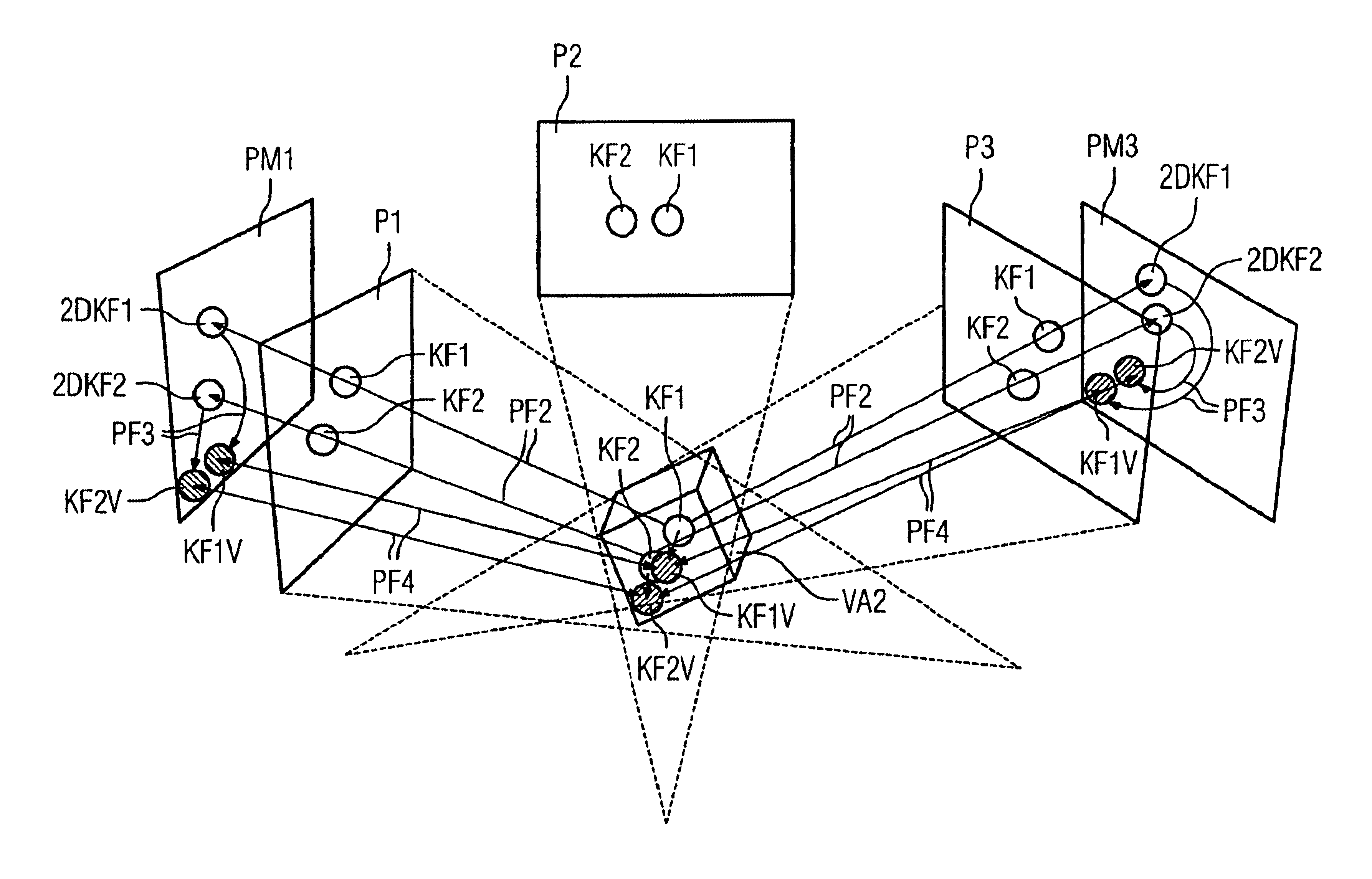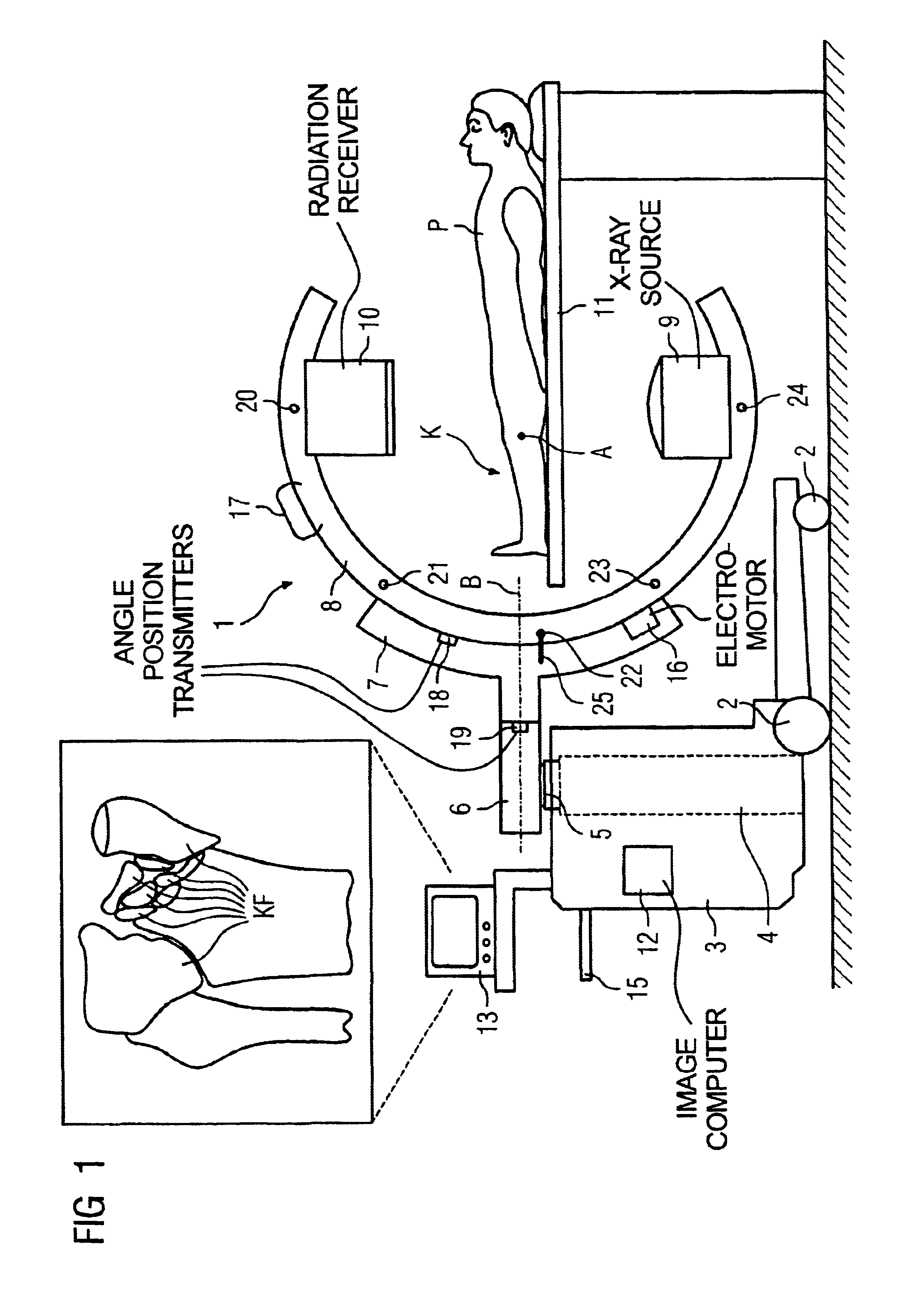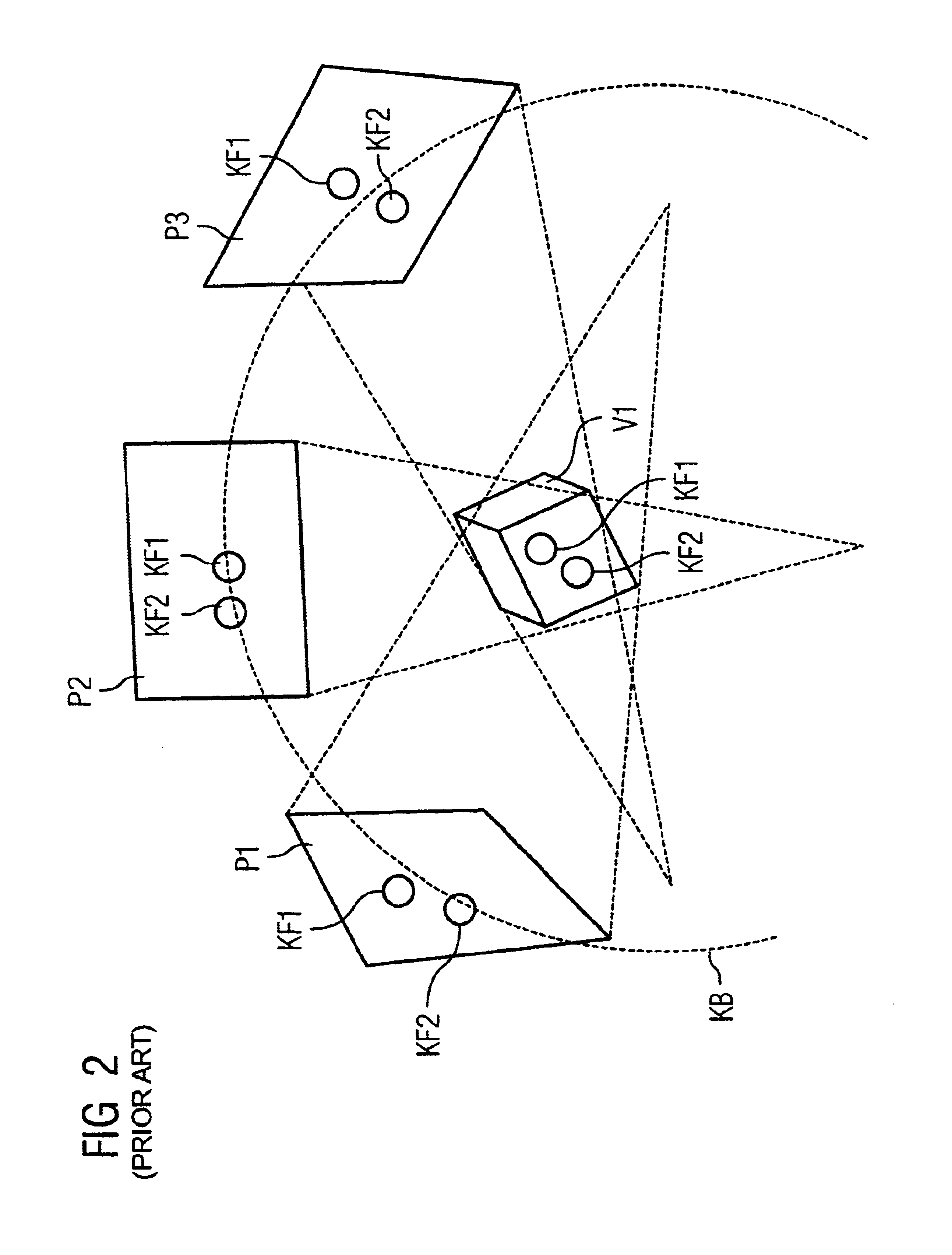Method for intraoperative generation of an updated volume data set
a technology for volume data and intraoperative generation, applied in the field of intraoperative generation of updated volume data set of patients, can solve problems such as inability to be used in the current situation
- Summary
- Abstract
- Description
- Claims
- Application Information
AI Technical Summary
Benefits of technology
Problems solved by technology
Method used
Image
Examples
Embodiment Construction
[0021]The C-arm x-ray device 1 shown in FIG. 1 is suitable for implementing the inventive method and has a device cart 3, provided with wheels, in which is arranged a lifting device 4 (shown only schematically in FIG. 1) having a column 5. A holder 6 is arranged at the column 5 at which a positioner 7 is present to position a C-arm 8. An x-ray source 9 and an x-ray radiation receiver 10 are arranged opposite one another on the C-arm 8. The x-ray source 9 preferably emits a conical x-ray beam in the direction of the x-ray radiation receiver 10 (having a planar receiver surface), which can, for example, be an x-ray intensifier or a flat image detector. In the exemplary embodiment, the C-arm 8 can be isocentrically adjusted both around its orbital axis A (schematically indicated in the FIG. 1) and around its angulation axis B (schematically indicated in the FIG. 1).
[0022]Volume data sets, for example voxel volumes, can be generated with the C-arm x-ray device 1 representing body parts ...
PUM
 Login to View More
Login to View More Abstract
Description
Claims
Application Information
 Login to View More
Login to View More - R&D
- Intellectual Property
- Life Sciences
- Materials
- Tech Scout
- Unparalleled Data Quality
- Higher Quality Content
- 60% Fewer Hallucinations
Browse by: Latest US Patents, China's latest patents, Technical Efficacy Thesaurus, Application Domain, Technology Topic, Popular Technical Reports.
© 2025 PatSnap. All rights reserved.Legal|Privacy policy|Modern Slavery Act Transparency Statement|Sitemap|About US| Contact US: help@patsnap.com



